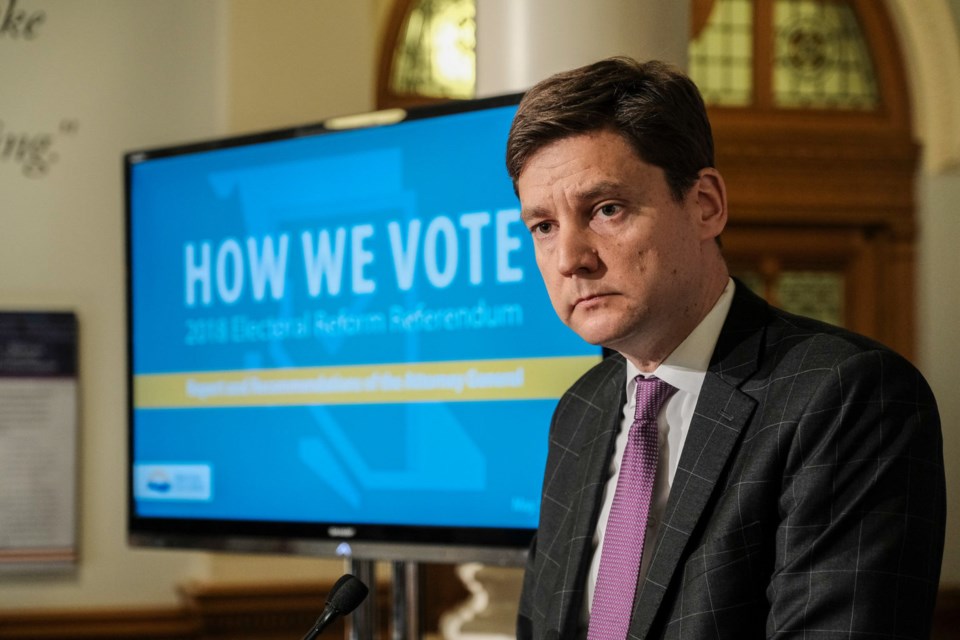The NDP government under John Horgan watched its spending.
Under David Eby, we get to watch it spending.
The NDP government under Horgan struck the term “deficit” from the vocabulary.
Under Eby, the deficit strikes back.
And if you pore through the budget documentation for any signs of restraint as the recession encroaches, you are drawn momentarily to page 15 and a chart titled “New Measures to Reduce Costs,” only to discover that it isn’t about saving tax dollars at all. No, it is about spending more of our earned and taxed dollars on us, much of it indefinitely.
The questions immediately arise: Was Horgan too thrifty or is Eby too spendthrifty? Did Horgan leave a mess or is Eby creating one?
Public finances in the pandemic necessarily grew to support workers, companies and systems to keep us healthy. But who would have thought that, after all those years of subsidies and sustenance to combat a historic health crisis, government spending would actually continue to grow?
Tuesday’s provincial budget reflects the most direct intervention into the economy of any B.C. government in ages. It tips the scale into deficit territory: $4.2 billion in the year starting April 1, $3.8 billion in 2024-25 and $3.0 billion in 2025-26.
Contingencies and forecast allowances are set aside to mitigate the deficits and perhaps to make us feel a bit better a little later about the rush into the red, but these “layers of prudence” seem porous and puny in these uncertain economic times.
Fair enough, the budget ministers extensively to those in greatest difficulty, with plans for health and mental-health care, for free contraception, for additional school food programs, and for those on disability and income assistance, among other things. The $400 annual renter rebate promise of the 2017 election campaign at last comes true starting in 2024 in a watered-down form of a tax credit.
But the first true taste of the Eby government swings the NDP leftward to focus on compensation at the expense of competitiveness. There is no concurrent plan with the spending spree to spur the very economy upon which it grazes and gobbles. Instead, Eby’s government (unless it’s replaced in 2024) depends on an enlarged population to increase the tax base.
It notes that revenue from housing, natural resources, commodities and forestry revenue won’t carry the can in quite the same way – indeed, there are some harrowing revenue declines coming our way – but it is largely silent on any meaningful stimulus that might generate growth.
Tuesday’s budget is an example of what is known as reversion to the mean – meaning, in this case, too, mean to business. It is a document emanating from a more typical NDP government, vastly more about giving than getting, more about spending than saving. Incremental ministry budgets will be $4.7 billion in 2023-24, $5.4 billion in 2024-25, and $6.2 billion in 2025-26, when the tally reaches $74.9 billion.
If Eby had an opportunity to demonstrate some sense of sacrifice in this environment, he opted not to do so with own office’s spending. It will come along for this ride. Estimates indicate the office of the premier will spend a bit more than $16 million in 2023-24, up from nearly $14.7 million this year.
Economic growth will be a paltry 0.4 per cent this year, then 1.5 per cent next, when much of the new spending and programming will be unleashed. About the most optimistic prognosis on the resilience of the B.C. economy to be found in the budget documents: We are “relatively well positioned to face potential economic challenges.”
At an earlier stage in the election cycle, it is doubtful a budget like this would have been presented, but the timing of the disbursing is perfect for 2024 and memories at the ballot box.
Only a few weeks ago, back in better times, the provincial surplus was $5.7 billion. The premier has since made several announcements to disburse much of it before the March 31 use-it-or-lose-it deadline that might have thrown some coins toward the debt.
Debt comes in two public forms: the taxpayer-supported debt for government operations and the self-supported debt that includes those of our Crown corporations. The taxpayer-supported debt will reach $75 billion and the self-supported debt another $31 billion, and with some forecast allowances will reach nearly $108 billion in the coming fiscal year, then $122 billion, then $134 billion between the two forms of debt.
The debt-to-GDP ratio that so many spending governments use as a defence mechanism when criticism arises is 16.4 per cent in the year ending March 31, but it’ll soar to 23 per cent by 2025-26. Our debt to revenue ratio of 78.7 per cent this year goes to 100.1 per cent in the coming year, then to 114.8 and 124.9 per cent. All in all, a balance sheet in a bad direction.
Finance Minister Katrine Conroy was clear about the surplus: “We won’t see this again.” As for cuts: “It’s just not the time” she said.
And the d-word, the word stricken by Horgan: Will it be gone in three years? “We have a three-year plan,” the minister said, avoiding the answer I think we all know.
Kirk LaPointe is publisher and executive editor of Business in 91原创 and vice-president, editorial, of Glacier Media.



